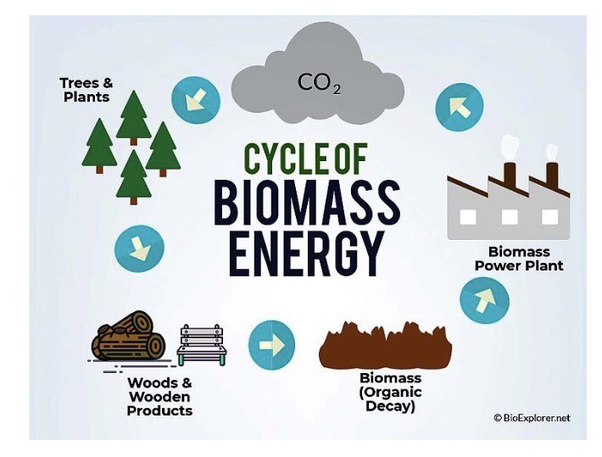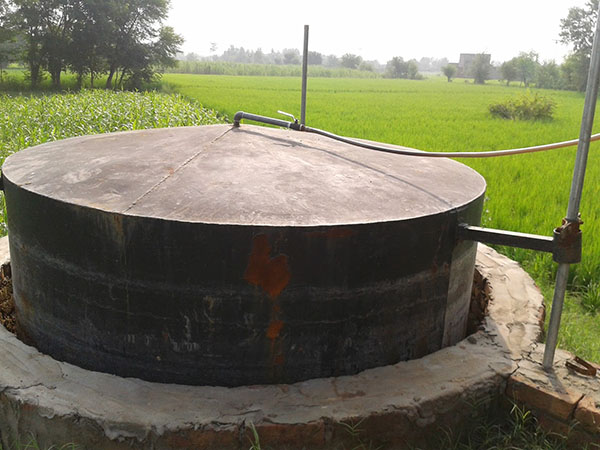Biomass Fuel Cooking
What is Biomass?
Biomass is defined as “The measurable organic matter include trees & shrubs, crops and grasses, algae aquatic plant agricultural and forest residues plus all form of human animal plant waste” The chemical composition of biomass varies among species, but basically consists of high, but variable moisture content, a fibrous structure consisting of lignin, carbohydrates or sugars, and ash. Biomass is very heterogeneous in its natural state and possesses a heating value lower than that of coal. An effectively uses of biomass can be a source of liquid fuel (e.g.,biodiesel) or gaseous fuel (e.g., “wood gas”), but the most common use is as a solid fuel (e.g., wood, biomass pellets).
In spite of economic development, traditional solid biofuel (such as wood, agricultural waste, and dried animal manure/ dung cake) is still widely used for meeting cooking and space conditioning needs though per capita usage of cooking bio-fuels has declined. Dependence of the population on unprocessed solid biofuels is expected in continue in foreseeable future.


The use of firewood or agricultural residues for cooking is accompanied by two environmental problems. First, pollutants like suspended particles, carbon monoxide and unburnt hydrocarbons affect the indoor air quality. Bio-fuel combustion in traditional mud stove for cooking in households is a common phenomenon after modifications to adjust for variance in diet and cooking styles as a complex web of social, economic, technical, organizational, and individual factors interact to influence adoption decision of cooking technologies at household level.
Technology Development
Combustion of biomass in a cook stove is a variable process because thermodynamic efficiency of a cook stove depends upon a large number of factors such as stove design, fuel composition, vessel design, culinary practice, meteorological conditions and operational variables, such as fire tending and rate of heat supply, etc. Most of these factors are variable in nature and hence the thermodynamic efficiency of a cook stove is not a unique property of the cook stove. Thus, it has a limited utility and cannot predict the actual fuel consumption. The efficiency is a design tool rather than a means of predicting field performance of ICS.
Gasification
Gasification is the process of converting solid fuels, such as wood, agricultural residues and coal, into a combustible gas. A biomass gasifier consists primarily of a reactor or container into which fuel is fed along with a limited (less than stoichiometric, or amount required for complete combustion) supply of air. Heat for gasification is generated through partial combustion of the feed material. The resulting chemical breakdown of the fuel and internal reactions result in a combustible gas usually called producer gas. The heating value of this gas is in the range of 4-6 MJ/Nm, or about 10-15 % of the heating value of natural gas. Producer gas is a mixture of the combustible gases hydrogen (H), carbon monoxide (CO), and methane (CH) and the incombustible gases carbon dioxide (CO) and nitrogen (N); the actual gas composition may vary considerably depending on fuel type and gasifier design. Biomass energy pathway contain mainly Combustion & Gasification for cooking, in accent days people also using Combustion Technology for cooking & lighting, cooking with combustion Technology having efficiency 6-9% as way 94% of energy waste due to Lack Of high performance devices. So we can say that combustion technologies are “Immature Technology” or inappropriate technology.

Now Days improved combustion Technology has been developed which are costly due using of expensive raw material & these technology efficiency having 15-25%, still 60% to 75% Energy going to wastage, for further improved technology are biomass gasification which having efficiency more than 40-55%, Due to lack governmental support, Unavailability of adequate Poor technology transfer Difficulty in integration manpower to develop, with the social structure installation, operate and maintains.

Rocket Stove
The rocket stove is a variety of wood-burning cooking stove with a higher efficiency than other types of traditional ovens due to a better insulation and a better combustion process. They function under a similar principle as rocket stove mass heaters. Most rocket stoves are easy to build, and can be made with low-cost materials.
The rocket stove operates roughly twice as efficiently, and substantially more cleanly, than the open fire cooking methods still used in many areas of the world. Furthermore, the design of the stove requires small diameter lengths of wood, which can generally be satisfied with small branches. As such, sufficient fuel for cooking tasks can be gathered in less time, without the benefit of tools, and ideally without the destruction of forested areas.
Because these qualities improve local air quality, and discourage deforestation, the rocket stove has attracted the attention of a number of appropriate technology concerns, which have deployed it in numerous third-world locales (notably, the Rwandan refugee camps). This attention has resulted in a number of adaptations intended to improve convenience and safety, and thus the size of the target audience. The Just a Stove, for example, is a cousin of the rocket stove adapted for indoor use and family cooking needs.
Uses & Benefits
The main justifications for rocket stoves are economical, social, and environmental. Stove programs can produce economic benefits, saving time and money for the users. In urban areas where people purchase biomass fuel, the payback time for the cost of a rocket stove is short, thus saving on the cost of fuel.
Rocket stoves can help reduce the over-harvesting of trees. Improved indoor air quality and fuel efficiency have social and health benefits, especially for women and children. In order to reduce indoor air pollution, rocket stoves must improve combustion of the wood fuel, which means reducing the amount of smoke and harmful emissions produced during the burning process.
Rocket stoves are insulated and lifted off of the floor. This reduces the danger of children burning themselves, which is an important improvement over traditional open pit fires.
How it's Made?
A rocket stove is a simple mechanism mostly made of the following elements:
- Chimney: this can be made out of a metal box –such as a 5-gallon tin can– or pipe standing vertically to support the cooking vessel.
- Fuel magazine: a short length of steel or ceramic pipe fitted horizontally into the base of a chimney.
- Fuel shelf: a flat plate to hold the fuel clear of the bottom of the magazine to allow air to flow underneath.
- Heat exchanger: a tubular metal shield that forces hot gases from the chimney to pass over the sides of the cooking vessel.
Some of the principles for building a rocket stove are:
- Insulating every element in contact with the fire and hearth.
- Drive the flow of combustion gasses around the edge of the cooking pot.
- A good air draft into the fire to increase the air flow speed.
- Design the stove so that the pot comes as close to the fire as possible.
- Consider the use of metal pots for cooking.
- Insulation around the fire

Biomass – External Link
Health impacts of household fuelwood – External Link
Household air pollution and health – External Link




